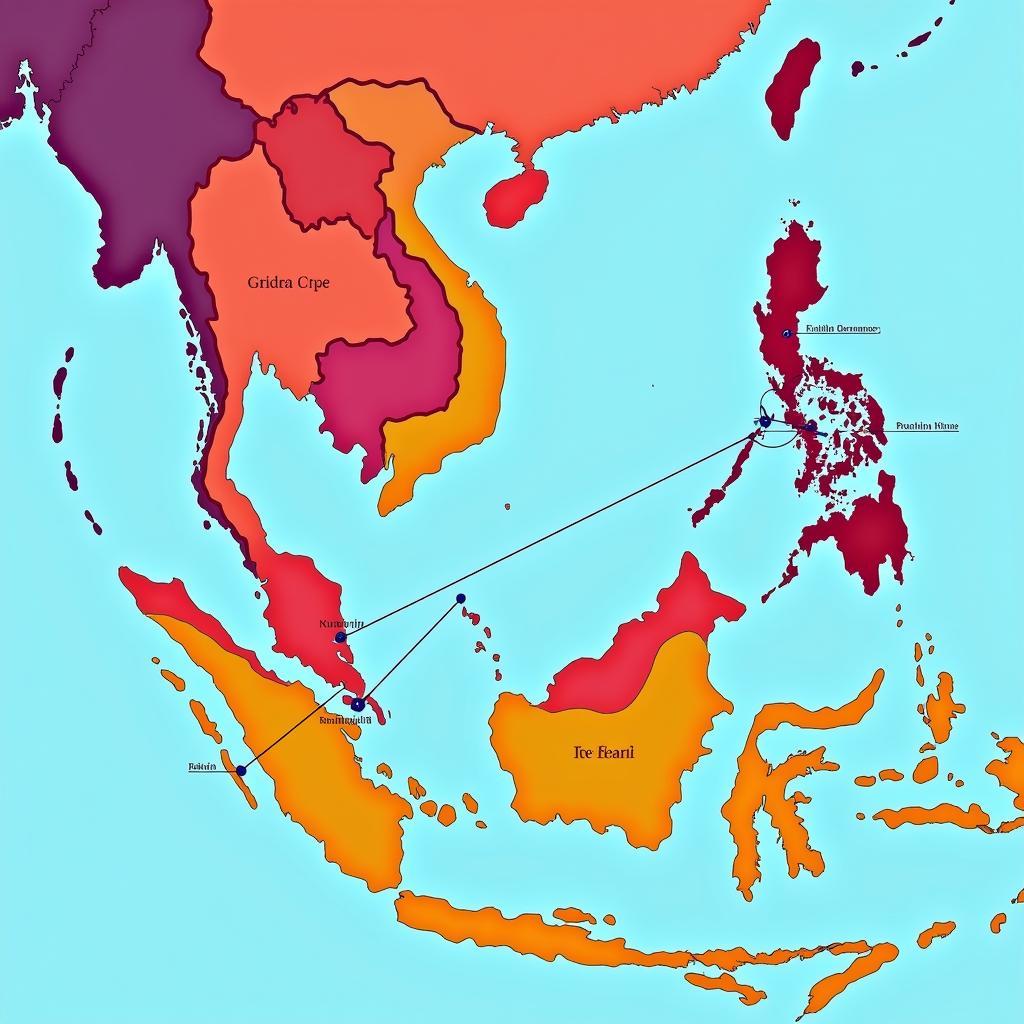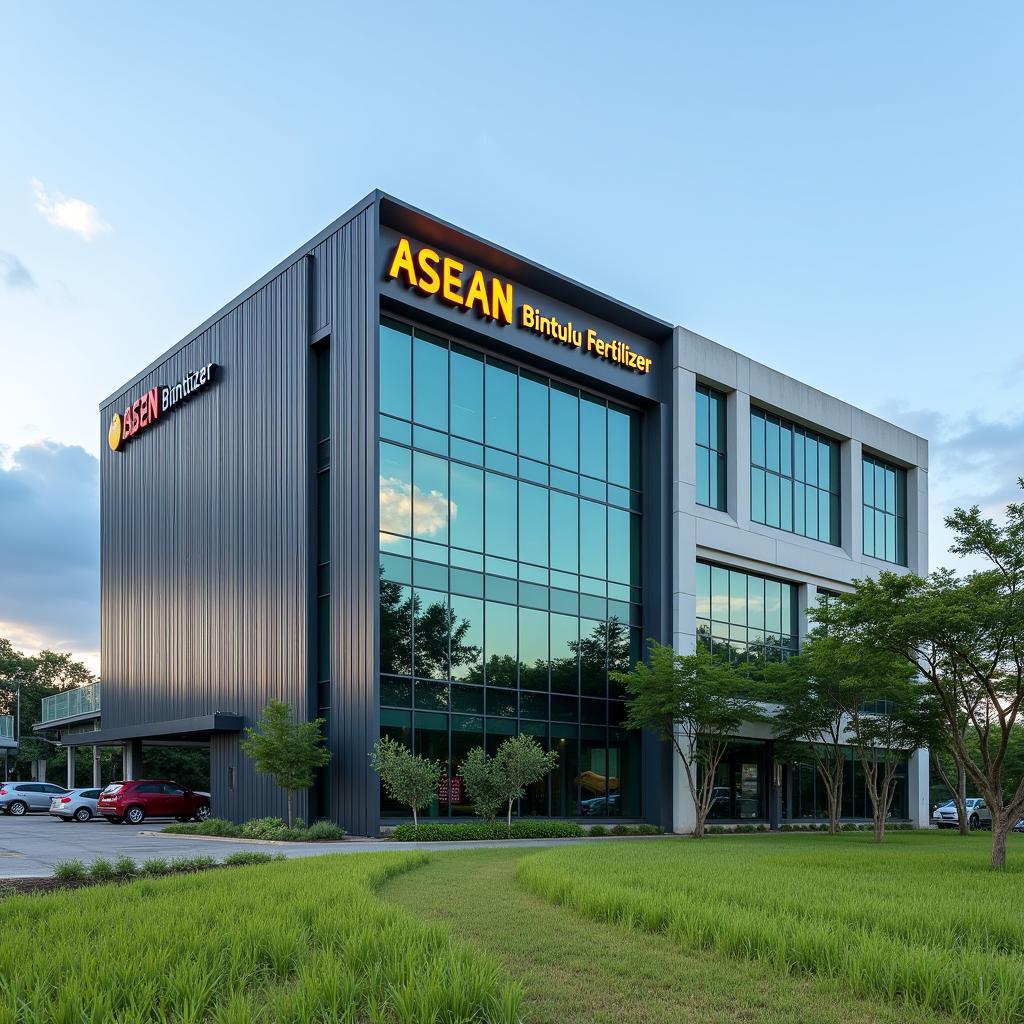Asean Capital Market Integration is a process of harmonizing regulations and linking stock exchanges to create a single, deeper, and more efficient capital market in the ASEAN region. This integration aims to attract more investments, facilitate cross-border capital flows, and promote economic growth across the ten member states.
 Map of ASEAN Countries with Integrated Capital Market
Map of ASEAN Countries with Integrated Capital Market
Benefits of ASEAN Capital Market Integration
A more integrated ASEAN capital market offers a multitude of benefits for businesses, investors, and the overall economy of the region. Here are some key advantages:
- Increased Investment Opportunities: Integration creates a larger pool of investment opportunities for investors, allowing them to diversify their portfolios and access a wider range of assets.
- Lower Cost of Capital: By increasing competition and facilitating cross-border investments, integration can lead to a lower cost of capital for businesses in the region, making it easier for them to raise funds for expansion and growth.
- Improved Financial Stability: A more integrated market can enhance financial stability by providing a larger buffer against economic shocks and reducing the reliance on individual national markets.
- Enhanced Regional Competitiveness: A deeper and more liquid capital market can increase the competitiveness of ASEAN companies, allowing them to compete more effectively on a global scale.
Key Initiatives and Challenges
ASEAN has been actively pursuing capital market integration through various initiatives, including:
- ASEAN Capital Market Forum (ACMF): Established in 1999, the ACMF serves as the primary platform for ASEAN member states to collaborate on capital market development and integration initiatives.
- ASEAN Trading Link: This initiative aims to link the stock exchanges of ASEAN countries, making it easier for investors to trade securities across borders.
- ASEAN Collective Investment Schemes (CIS): The CIS framework allows fund managers to operate across ASEAN countries, providing investors with more cross-border investment options.
 Image depicting hurdles and roadblocks
Image depicting hurdles and roadblocks
Despite the progress made, ASEAN capital market integration still faces challenges, such as:
- Regulatory Harmonization: Differences in regulations and legal frameworks across member states pose a challenge to seamless cross-border transactions.
- Infrastructure Development: Developing robust financial infrastructure, including trading platforms and clearing and settlement systems, is crucial for supporting a more integrated market.
- Investor Education: Enhancing investor awareness and understanding of the opportunities and risks associated with investing in a more integrated ASEAN capital market is essential.
“Harmonizing regulations is key,” says Dr. Maya Sulistyo, a financial expert specializing in ASEAN markets. “It’s about finding that balance where we maintain the integrity of individual markets while fostering an environment conducive to cross-border investments.”
The Future of ASEAN Capital Market Integration
While challenges remain, the commitment to ASEAN capital market integration is strong. The region recognizes the significant economic benefits that a more integrated capital market can bring.
 A graph depicting upward growth trends in the ASEAN capital market
A graph depicting upward growth trends in the ASEAN capital market
The future of ASEAN capital market integration will likely involve:
- Further regulatory harmonization: ASEAN will continue to work towards harmonizing regulations and streamlining cross-border investment procedures.
- Technological advancements: The adoption of fintech solutions and digital platforms is expected to play a key role in enhancing market efficiency and accessibility.
- Increased investor participation: As the ASEAN capital market becomes more integrated and investor-friendly, greater participation from both regional and international investors is anticipated.
Conclusion
ASEAN capital market integration is a journey, not a destination. It requires continuous effort, collaboration, and adaptation to the evolving global financial landscape. However, the potential rewards are significant. By working together, ASEAN member states can create a vibrant and dynamic capital market that attracts investment, fosters innovation, and drives sustainable economic growth for the benefit of all.
FAQ
1. What is the main goal of ASEAN capital market integration?
The primary objective is to create a single, deeper, and more efficient capital market in the ASEAN region to attract investments, enhance capital flows, and boost economic growth.
2. How can investors benefit from a more integrated ASEAN capital market?
Investors will have access to a larger pool of investment opportunities, potentially leading to higher returns and greater portfolio diversification.
3. What are some of the challenges facing ASEAN capital market integration?
Key challenges include regulatory harmonization, infrastructure development, and investor education.
4. What role does technology play in ASEAN capital market integration?
Technology, particularly fintech, plays a vital role in enhancing market efficiency, transparency, and accessibility for investors.
5. What is the future outlook for ASEAN capital market integration?
The outlook remains positive, with continued efforts toward regulatory harmonization, technological advancements, and increased investor participation.
Need assistance? Contact us at Phone Number: 0369020373, Email: aseanmediadirectory@gmail.com. You can also visit us at Thon Ngoc Lien, Hiep Hoa, Bac Giang, Vietnam. Our customer service team is available 24/7.
